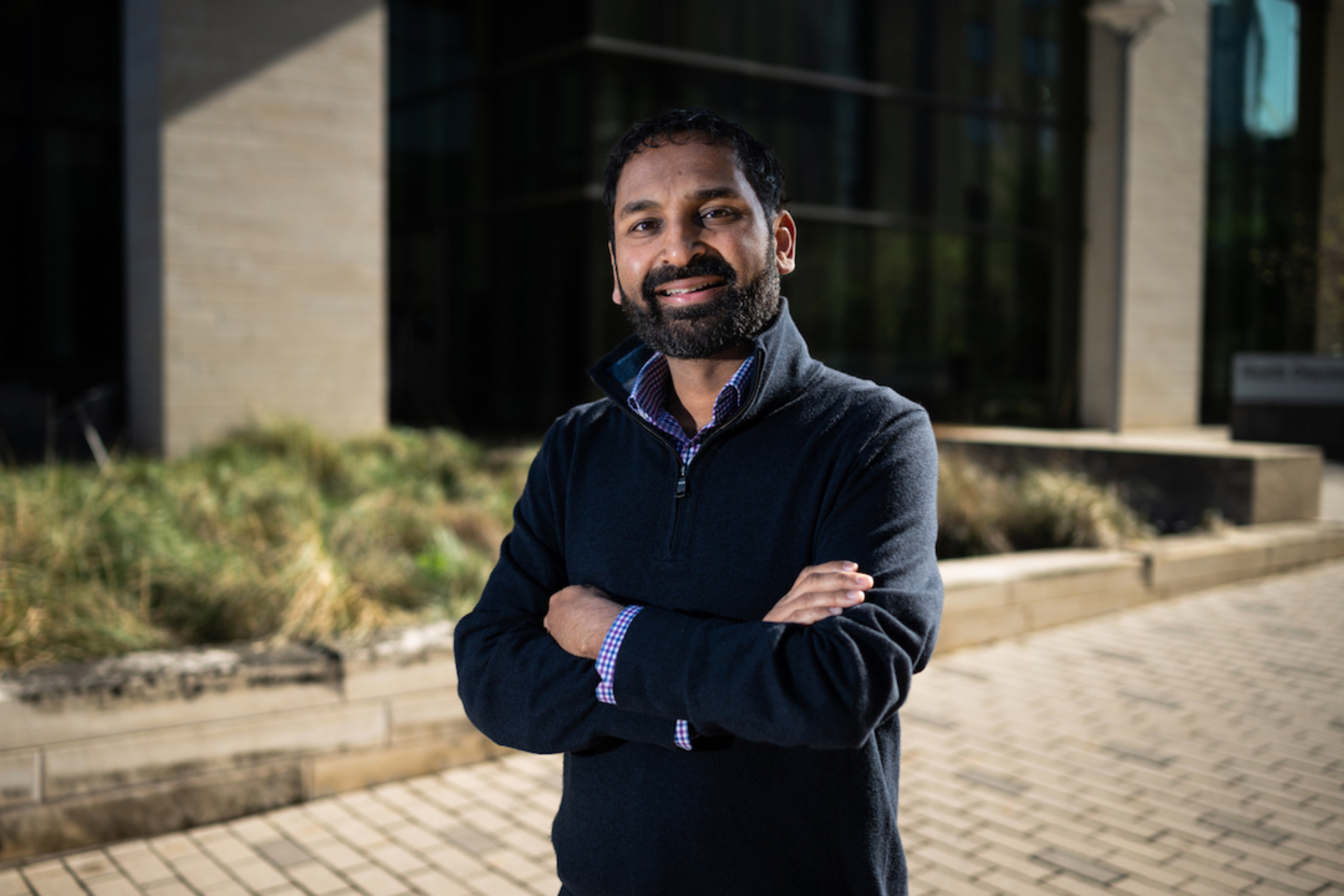In addition to his patients, nearly every medical student or resident who has studied dermatology in Austin over the past decade has been impacted by the work of Ammar Ahmed, M.D.
Among the earliest faculty members to train residents in the city’s first academic dermatology program in 2011, he became director of Dell Med’s Dermatology Residency in 2017 and led the design of the school’s undergraduate dermatology curriculum that launched with the first class of medical students in 2016. Ahmed, an associate professor in the Department of Internal Medicine, also conducts national work leading educational committees with the American Academy of Dermatology.

Ammar Ahmed, M.D.
And Ahmed’s influence extends far beyond the classroom: In addition to providing care through Ascension Seton and directing the dermatology service for CommUnityCare Health Centers, one of the largest federally qualified health systems in Texas, Ahmed has presented on vitiligo research around the world and collaborates with industry partners on cutting-edge ways to treat the disease.
Q&A With Ahmed:
What is vitiligo, and what are the challenges in treating it and expanding access to care?
Vitiligo, a skin discoloration condition that impacts quality of life due to both stigma around appearance and, commonly, autoimmune comorbidities, can be very difficult to treat. Everyone’s case presents uniquely, and for some patients, medication or ultraviolet light therapy are effective; for others, surgery (grafting) may be the only viable option. Currently, very few locations around the country offer vitiligo grafting, including one here in Austin at the practice I lead.
One of my goals is to make a wider spectrum of treatments available to people with vitiligo, whether that be clinical trials for new medical therapies or the grafting options that we offer. I am proud and humbled that we have been able to treat individuals with vitiligo from all across Texas and other states with grafting, an option they otherwise may not have access to.
I have also been working with biotech startups and device companies to develop new technologies that reduce the “friction” for dermatologists to offer vitiligo grafting services, with the goal of further expanding access to these therapies.
I have served as an investigator and also currently serve as an advisor to a device company developing a kit that can make grafting for vitiligo much more accessible and user-friendly to dermatologists, and resultantly, to the patients they serve.
How does this hands-on experience inform your approach to educating future dermatologists?
Another key goal of mine is to expand trainees’ exposure to specialized treatments for pigmentary disorders. As such, I work side by side with our learners, students and residents alike, treating clinical trial patients and performing grafting procedures in individuals with vitiligo. Educating the next generation of dermatologists in these therapies will hopefully improve access to next-level treatments for vitiligo for the patients they ultimately serve.
Working with trainees brings me so much professional joy and fulfillment. A resident that graduated a few years ago sent me a thank-you card after graduation and shared that she learned more from me when I wasn’t directly teaching her than when I was; watching how I interacted with patients and came up with patient-centered management plans taught her more than any lecture I ever gave.
That really stuck with me. As academic physicians, how we interact with patients not only affects the patients, but it is also the crux of how we educate physicians in training. We teach them in the classroom, but what they really take with them are the nuances of how their mentors approach and interact with their patients. I have a responsibility to model patient-centered, evidence-based care not just to the patients I serve, but also to the next generation of dermatologists.